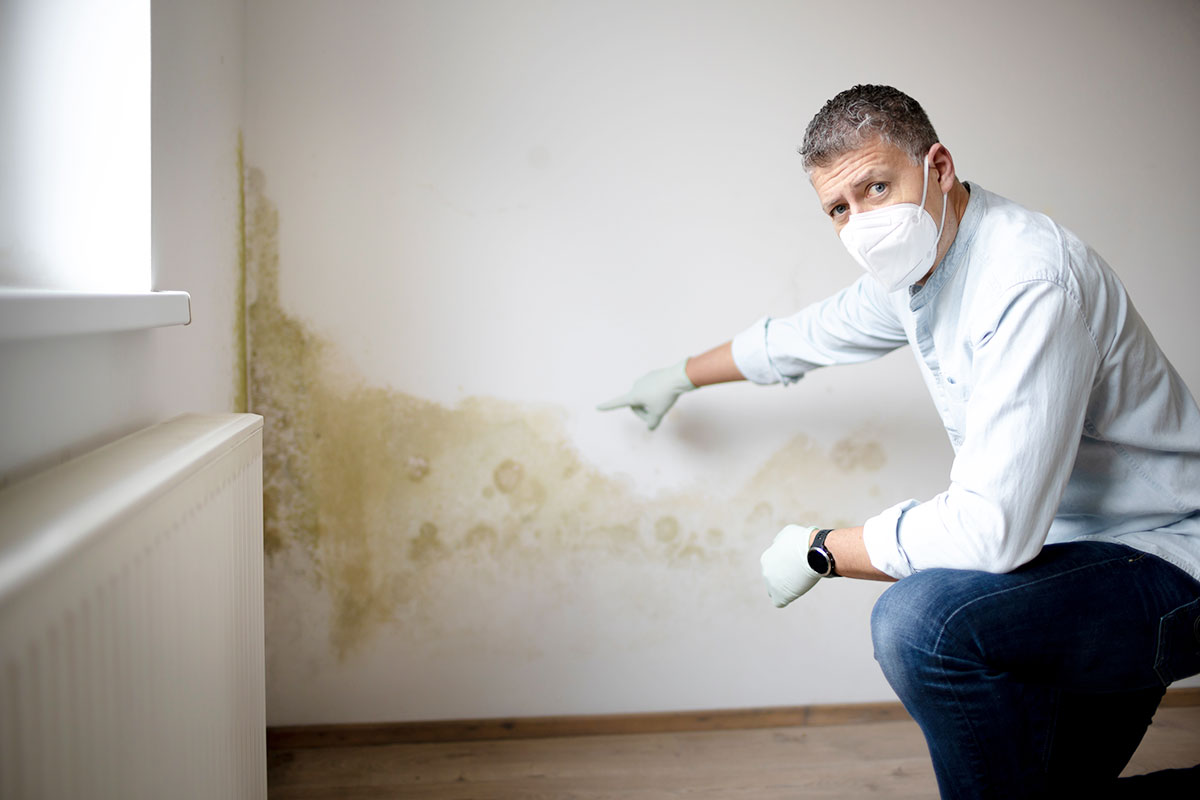Is mold remediation hazardous? It’s worth considering that the danger lies not in the mold removal process itself, but rather in the fungus and its spores. The mold remediation process isn’t inherently risky when completed by certified firms and can actually prevent potential health issues down the line.
At first glance, mold in your home or business might appear insignificant. Yet, it’s a significant issue with far-reaching consequences. Mold can inflict various types of damage, some of which might catch you off guard. Here are a few examples:
While mold spores naturally exist in indoor air, their levels can escalate dramatically when mold begins to grow indoors. Energy-efficient building practices, aimed at enhancing heating and cooling efficiency, often result in limited ventilation, providing mold with fewer avenues for dispersal.
This poses significant health risks, particularly for individuals with allergies or asthma. Scientific evidence demonstrates that mold can cause adverse health effects even in non-sensitive individuals, making any mold issue a potential hazard. Living with mold is undesirable due to its rapid spread, leading to an escalation in the concentration of spores in the air over time. Moreover, complex mold situations carry the added risk of diverse mold species, some of which may be toxic, which is why it is recommended to remediate the mold immediately.

In its natural habitat, mold thrives on fallen leaves, branches, and other organic matter, playing a crucial role in decomposition that enriches soil and breaks down dead vegetation.
However, when mold infiltrates buildings, its effects can be devastating. Mold has the capacity to weaken and deteriorate walls, floors, and ceilings over time, penetrating deep into materials. Wooden support beams are particularly vulnerable, especially when mold flourishes in damp conditions, often concealed behind walls or in hidden spaces such as attics and crawlspaces. In instances where mold infests porous materials like upholstered furniture, building materials, or carpeting, thorough cleaning may not be sufficient, necessitating disposal and replacement instead.
Mold growth is a significant worry when dealing with water damage. In areas with excessive moisture, mold can start spreading within a few days. This highlights the importance of engaging professional water damage restoration specialists. Alongside addressing the structural damage caused by water, our team will conduct a comprehensive moisture mapping of the affected area to identify any mold growth. If mold is detected, we offer mold remediation services as part of our comprehensive water damage restoration project.
Our water damage restoration services include:
Resist the urge to simply wipe away visible mold with a cloth—it’s a sign that mold is actively producing spores, and disturbing it can release these spores into the air. According to the CDC, immediate action is necessary when dealing with mold.
Avoid the affected area as much as possible. Mold growth increases the concentration of mold spores in the air, potentially leading to respiratory issues such as congestion, headaches, or dizziness.
Shut off your HVAC system to prevent the circulation of mold spores throughout your home or building.
Seek professional assistance for mold remediation. At 360 Restoration, our experts adhere to industry standards, utilizing specialized methods and equipment to address the problem effectively and safely.
Curious about what happens when you reach out to 360 Restoration for mold remediation? While every mold issue is unique, they all demand meticulous attention and expertise. Our mold remediation specialists at 360 Restoration are well-equipped to assess, eliminate, and remediate mold in both residential and commercial settings.
360 Restoration’s remediation process usually combines several of the following steps:
FAQs
How do I know if I have a mold problem?
Signs of mold include visible growth, musty odors, and health symptoms like allergies or respiratory issues. If you suspect mold, contact us for a professional inspection.
Can I clean mold myself?
DIY mold removal is not recommended as it can disturb mold spores, spreading them further and posing health risks. Professional remediation ensures safe and effective mold removal.
How long does mold remediation take?
The duration depends on the mold's extent and location. We'll provide a timeline after assessing your property.
Is mold remediation covered by insurance?
Coverage varies by policy and cause of the mold. We can assist in navigating insurance claims related to mold remediation.
How can I prevent mold in the future?
Preventing moisture accumulation is key. Address water leaks promptly, maintain proper ventilation, and control humidity levels.
Are your mold remediation methods safe?
Yes, we use safe, effective methods and products to remove mold without harming your property or health.